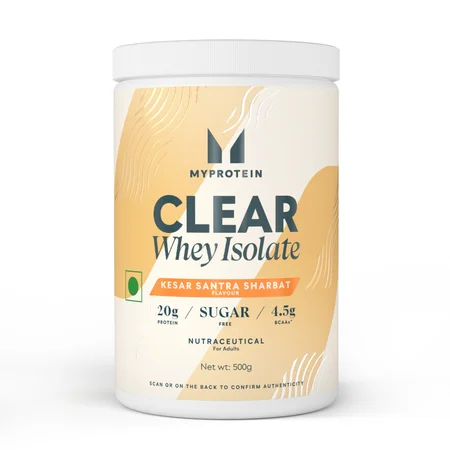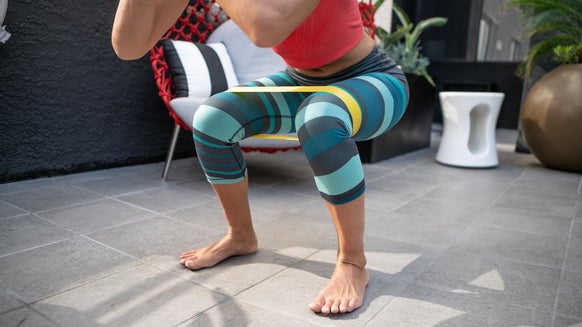Does Your Step Count Really Matter?

Two words: step count.
If you're feeling bothered by your FitBit right now, you're not alone. Whether you're ready to get on the move, excited to reach another goal or dread the thought of having to fit in 5,000 more steps around your busy lifestyle… which one are you?
With a number of you owning a fitness tracker, we know that a lot of you are aware of your step count and may even have daily step goals. It can feel pretty impossible to get enough steps in sometimes.
This week we’re looking at whether your step count really matters or whether it’s just a trend that’s stuck.

Why do we focus on step count?
A step count is one way to monitor fitness as reaching a number of steps each day shows that we’re moving. This is a good starting point for exercise and showing how active we are throughout the day.
Aside from our initial thoughts on the benefits of simply moving, sometimes there are also monetary or materialistic benefits. These may be rewards with a health insurance provider or medals from competitions and virtual races.
There are, of course, plenty of other ways to stay fit such as cycling or swimming — both of which don't rely on steps, so just focusing on moving your body in a way that makes you happy will always positively impact your health.
Why 10,000 steps?
It’s generally thought that 10,000 steps are the optimal daily goal.
Need a starting step count goal? 10,000 steps. How many steps is Ben from next door looking to get in each day with his dog? 10,000 steps. How far should we walk this morning? Until we’ve reached 10,000 steps.
10,000 steps is the answer that many of us tend to set as a goal, but where did this 10,000 step goal come from?
The origins extend back to 1965 when a Japanese company created a device — the first wearable step counter. This device was called
The name was really effective as a marketing tool but has also stuck with the pedometers and fitness trackers that followed, hence the standard 10,000 step goal. Basically, there’s not much science to back up the 10,000-step rule.
What are the benefits of a step count?
Adequate step count has been proven to reduce your risk of mortality —
If you’re looking for a step count target, aim for a minimum of 5,000 steps. Anything below this number does not provide substantial cardiovascular benefits.2
But does this mean that the health benefits stop at 7,500 steps or are there additional benefits to walking and getting in more steps?
Whilst studies mainly look at the reduction of mortality with step count, taking more steps means that you are on your feet more and, therefore, your cardiovascular system is having to work.
We know that regular physical activity helps to reduce your blood pressure, improve your blood cholesterol levels and decrease body weight, and taking more steps a day means that you are contributing to these physical benefits.3
Is a step count the most efficient way to improve your health?
The average running speed is faster than walking pace, therefore it’s quicker to reach a step count by running than by walking. If time is of the essence, jogging a route will be quicker to reach your step count goal than heading out on a walk.
This is demonstrated by the fact that the NHS recommends carrying out half the amount of exercise time if you are participating in vigorous exercise rather than moderate intensity physical activity.4
It’s well-known that jogging for the same length of time as walking would produce more cardiovascular benefits as your heart and body are put under more work.
In contrast to both walking and running, cycling uses different muscles, removes the weight-bearing trait of exercise and changes the intensity. Sure, running and cycling are both high-intensity sports, but the two are very different and suit different people for different reasons.
If you’re concerned about your step count as a way of keeping active and moving but worry about an injury (hey, it happens to the best of us at the most inconvenient time!), why not try household chores?
Light gardening for an hour is the same exercise intensity as light walking for an hour at an average speed of 3km/h and eliminates the weight-bearing impact that naturally comes with walking.
How to make it more enjoyable to get your steps in
Hitting a step count goal day in, day out can be quite monotonous. If you want to increase your step count or are simply looking for ways to make it more enjoyable, why not try some of these tips?
Take your dog for a walk and play a game along the way. Take a frisbee to the park and play with your household. - Park further away from your usual green area where you’d normally walk or meet up with your friends.
Phone a friend or family member whilst on your walk. Listen to a new podcast or create a new Spotify playlist to inspire your walk. Schedule smaller walks throughout the day. Who said that you need to hit your step goal all in one goal?
Take home message
Being aware of your step count is also a great way to ensure that you are staying active and moving, reducing your time spent being sedentary and improving your general health.
As a baseline goal, aim for a minimum of 5,000 steps per day to improve your general health. Additional steps are a bonus to your cardiovascular system and mental health, plus you’ll enjoy the fresh air and nature.
READ THIS NEXT:

10 Natural Food Sources High in Amino Acids
How you can get that protein power from your daily diet.

10 Fitness-Related Self-Isolation Talents To Learn In 2 Weeks
Great ways to spice up your home workouts and learn new skills.










